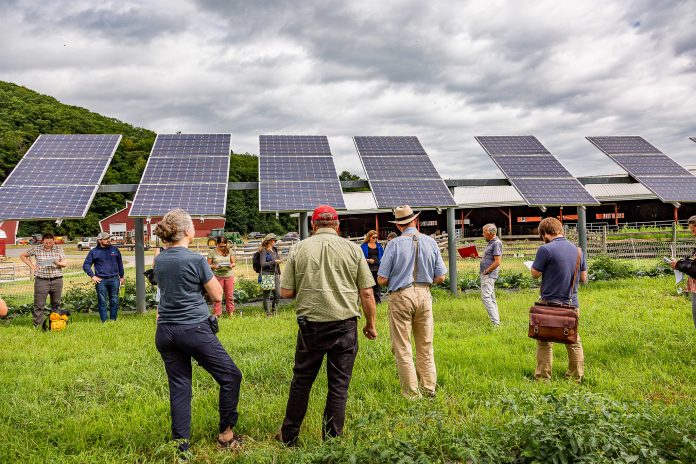The Republic of Croatia has recognized the value of agrisolar power plants and has allowed their installation on all agricultural land under permanent plantations registered in the Agricultural Land Use Registry (ARKOD) starting this year. They can also be installed on areas adjacent to existing farm premises where the installation of agrisolar systems achieves the goals of agricultural development, as well as on fishponds and other inland fish farms. To preserve agricultural production, it is mandatory to maintain the agricultural purpose of the land when installing agrosolars. Due to environmental protection considerations, agrosolars cannot be built within national parks and nature parks.
Croatia has thus become one of the 10 EU countries that have opted for the application of agrisolar power plants in agriculture. In countries that are leaders in their development, such as the Netherlands, France, Germany, Spain, Austria, Italy, and Hungary, their number is constantly increasing. As claimed by SolarPower Europe, of which OIEH is a member, Croatia has become part of the community of countries that are making significant efforts in the development of agrosolars, effectively connecting two main sectors of society and the economy – agriculture and energy. Agrosolars efficiently use the same agricultural land for food and energy production. Due to the high number of uncertainties and inquiries that OIEH receives daily on this topic, we provide an overview of answers to the most important questions about the operation of agrosolar power plants.
What are agrisolars?
Agrisolar, also known as agrisolar power plants, is a concept of energy production combined with food production on the same agricultural land. It is important that the solar modules in this combined production provide protection for crops from adverse weather conditions and other stresses such as intense solar radiation, extremely high temperatures, wind gusts, heavy rainfalls, hail, and frost.
On what types of agricultural land can agrosolars be installed?
In Croatia, agrosolars can be installed on all agricultural land registered in ARKOD as areas where permanent plantations are cultivated.
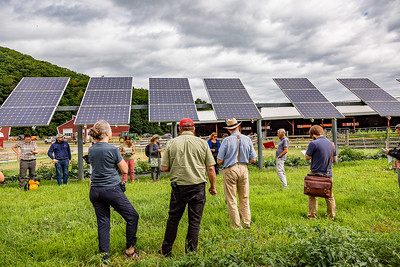
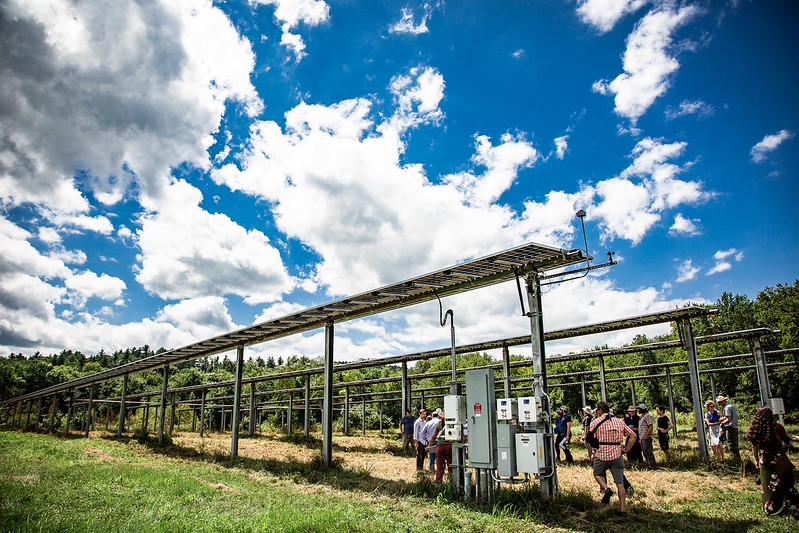
What is the difference between agrisolar and photovoltaic systems?
The application of agrosolars allows valuable arable land to remain in agricultural use primarily for food production while generating additional income through electricity generation. This is a key difference compared to “conventional” photovoltaic systems that do not allow for the dual use of agricultural land.
How do agrisolars protect against adverse weather conditions?
Partial panel coverage mitigates the effects of increasingly frequent weather extremes and storms, providing protection for agricultural crops against strong winds, regulating the amount of rainfall reaching the soil, directing or storing excess rainwater for drought periods, and acting as a shield against hail damage. Additionally, careful shading of crops provides partial shade to plants during periods of intense solar radiation. In short, agrisolars can assist agricultural crops similarly to how anti-hail nets, shading nets, mulching films, irrigation systems, and the like work.
How is it possible to simultaneously use the land without negative impacts on one of the productions?
The amount of light reaching the ground surface is significantly greater than what plants use for photosynthesis and the efficiency of converting it into electricity by photovoltaic modules. As agriculture needs to ensure food production while simultaneously producing green electricity, agrisolar power plants enable a more rational use of agricultural land and more efficient utilization of available sunlight.
How will we know if plants are getting enough light?
In agrisolar power plants, plants are never completely covered, so their growth can be controlled based on the degree of shading. Each project is designed according to the specific characteristics and requirements of the agricultural land location. The transparency of photovoltaic panels is adapted to the crops being grown, ensuring optimal growth conditions.
Due to the significant potential of agrisolars, many research projects are being conducted worldwide to optimize shading. However, the light requirements of individual species, crops, and even varieties can be determined with a high degree of certainty. Based on their physiological characteristics, the optimal degree of shading can be estimated for most common crops.
Do agrisolars hinder the use of agricultural machinery and equipment?
Agrisolars allow for the construction of systems without the need for unnecessary concrete foundations by anchoring or mounting on supports within the plantation.
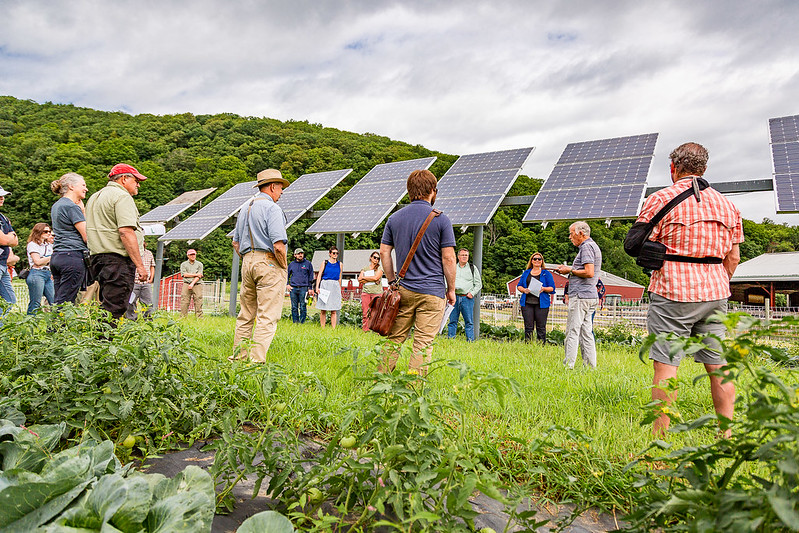
Are there any harmful effects of solar panels on crops and soil?
Solar panels themselves do not emit harmful substances or radiation, so they do not have a negative impact on crops or soil. The use of quality materials and proper maintenance ensures that solar panels remain safe and free from harmful emissions throughout their operational lifespan.
Wouldn’t it make more sense to install solar panels on all rooftops, parking lots, or other surfaces?
Photovoltaic systems make complete sense on rooftops and other surfaces as long as they do not interfere with or jeopardize their primary use. However, agrisolar power plants add additional value as they represent a concept of dual land use with the purpose of food production and energy generation. Additionally, they protect crops from adverse weather conditions, serving as an agronomic and economic measure.
What is an aquasolar power plant?
An aquasolar or solar power plant on a fishpond refers to photovoltaic systems that are installed on the surface of water bodies, typically on fishponds, lakes, or artificial reservoirs used for fish farming. These power plants use floaters to keep the photovoltaic panels on the water’s surface. The main advantages of this concept include more efficient cooling of solar panels due to their proximity to water, which can increase their efficiency, reduce water evaporation from reservoirs or lakes, and the optimization of space that would otherwise go unused.
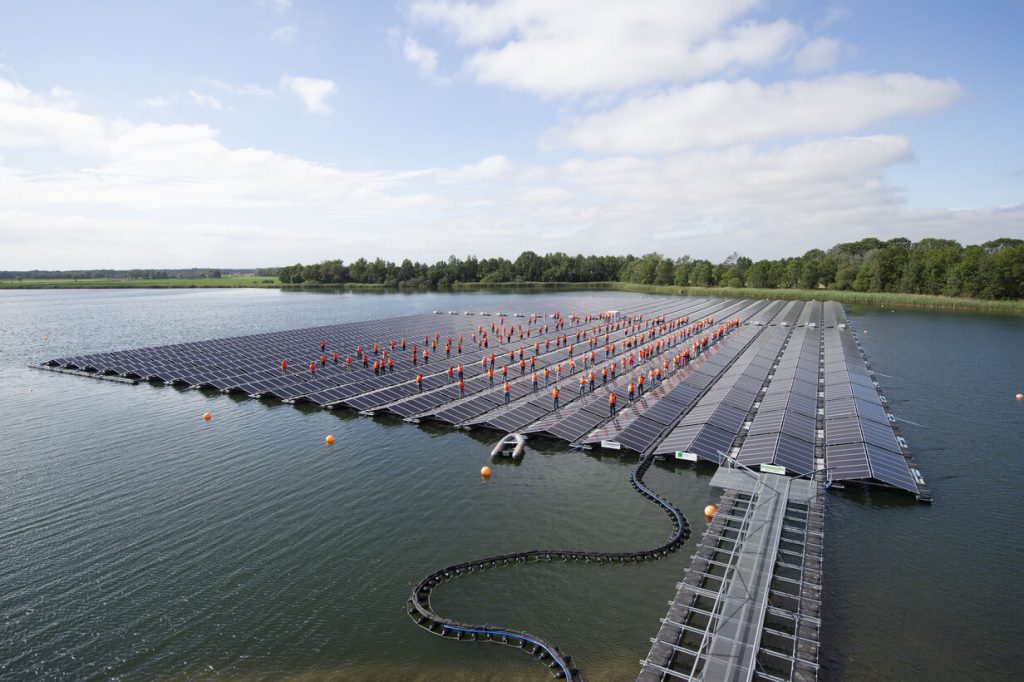
Are there already agrisolar systems in the world?
Agrisolar systems are a relatively new technology that is being developed and implemented in various regions around the world. Recent research indicates that their installed capacity has grown from 5 MW in 2012 to as much as 2800 MW in 2020, covering an area of approximately 3,000 hectares.
What benefits can farmers gain from agrisolar systems?
Agrisolar power plants provide multiple benefits to farmers, with the most significant ones being realized in three key areas:
Protection of crops from adverse weather conditions: Agrisolar power plants act as a shield for crops, reducing damage caused by strong winds, hail, heavy rains, and other stresses, thus decreasing crop losses and increasing overall productivity. Generating additional income from energy production: Farmers can not only produce energy for their own needs but also sell surplus energy to the grid. This provides an additional source of income that is relatively stable and predictable, reducing the financial risk associated with fluctuations in crop yields. Leasing the space above permanent crops to third-party companies that can invest in agrisolar systems: For farmers who do not wish to invest in photovoltaic systems themselves, one option is to lease their land to companies specializing in solar energy development. This allows for an additional source of income without the need for investment in solar equipment. What are the advantages of partnering with companies specializing in photovoltaic system development?
In a partnership model where the farmer continues to focus on agriculture while the company manages the solar power plants, the benefits can include:
Specialization: The farmer can continue to focus on what they do best – food production – while the company takes responsibility for the energy aspect of the business, including everything from project documentation preparation, and installation, to solar panel maintenance. Risk reduction: The farmer does not need to invest their own capital or worry about technical issues related to solar panels. Any risks associated with energy production and its placement in the energy market are taken on by the company. Steady income: The farmer generates a stable income from leasing their land to the company, contributing to the financial stability of the agricultural business, especially during periods of lower yields or lower crop prices. Contribution to sustainability: Through such collaboration, the farmer contributes to renewable energy production, improving the farm’s image and providing additional marketing advantages. Development opportunities: These partnerships offer opportunities for growth and diversification, allowing the farmer to expand their business or diversify their income. Additionally, such partnerships can provide the farmer access to the latest technologies and innovations in another industry, enhancing the overall efficiency of their operations.
Can an agrisolar power plant be removed after installation?
Yes, an agrisolar power plant can be completely removed to restore the land to its original condition. All assumptions for agricultural use and production remain after the system is dismantled.
Agrisolari su relativno nova tehnologija koja se razvija i primjenjuje u raznim regijama diljem svijeta, no novija istraživanja navode kako je njihova instalirana snaga, s početnih 5 MW u 2012. godini dosegla čak 2800 MW u 2020., što odgovara otprilike površini 3000 hektara.


